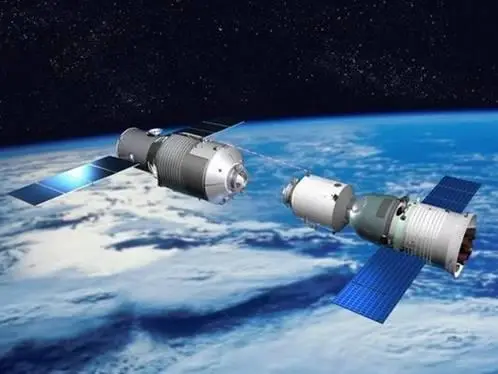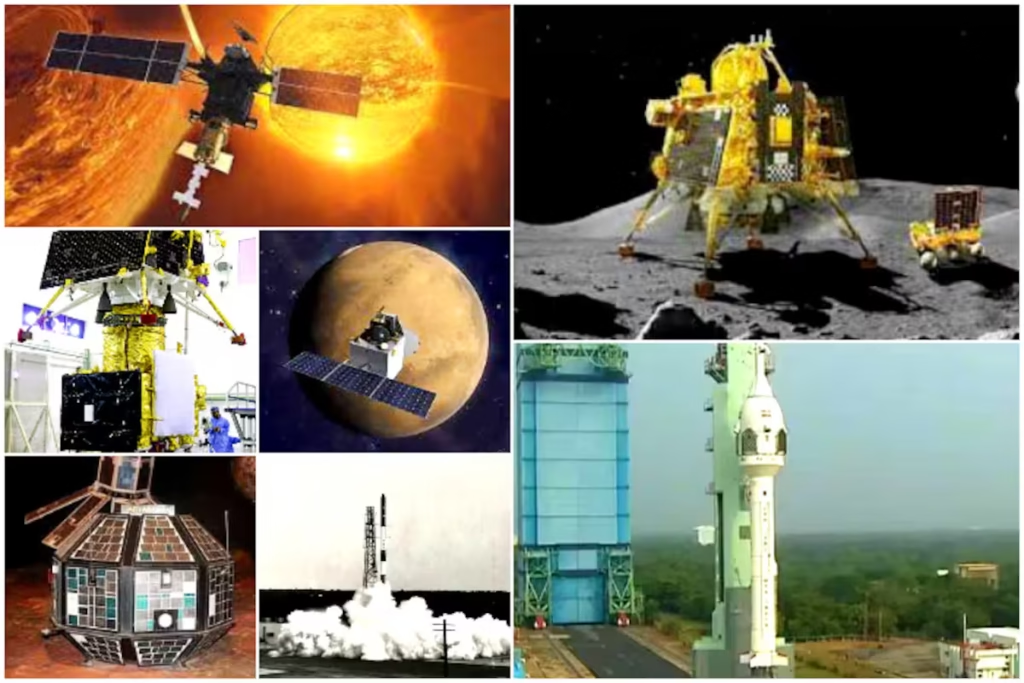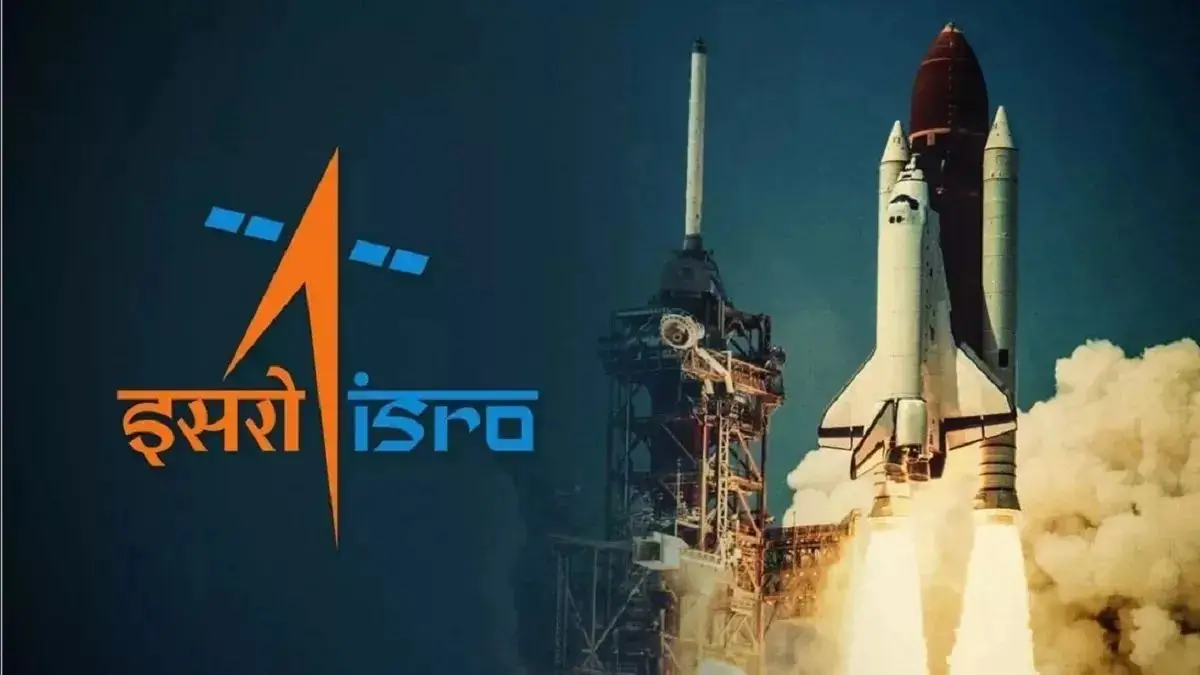ISRO’s Remarkable Space Docking Achievement : India into elite club
Recently, the Indian Space Research Organization (ISRO) achieved a major milestone in space docking technology, marking a significant advancement in India’s space exploration journey. Let’s find out what space docking involves and how ISRO’s achievement adds a new chapter to India’s space program.
ISRO’s Remarkable Space Docking Achievement : India into elite club Recently, the Indian Space Research Organization (ISRO) achieved a major milestone in space docking technology, marking a significant advancement in India’s space exploration journey. Let’s find out what space docking involves and how ISRO’s achievement adds a new chapter to India’s space program.
What is Space Docking

Space docking refers to the process of connecting two spacecraft in orbit, allowing them to operate as a single unit. This complex maneuver is fundamental to many space missions, including:
- The construction and maintenance of space stations such as the International SpaceStation (ISS).
- Spacecraft can be refueled in orbit to extend their operational lifetime.
- Conducting crewed missions to distant celestial bodies, such as the Moon or Mars, by connecting modules and transferring resources.
The complexity of space docking lies in the precise coordination required between
the docking spacecraft and the target. The two vehicles must perfectly
synchronize their speeds, trajectories, and orientations to achieve a
successful connection without damaging any structures.
Why is space docking important?
Space docking is not just a technological feat; it is a cornerstone of sustainable space exploration. Here’s why:
- Enables long-term missions: Docking allows spacecraft to be resupplied with fuel, food,and equipment, which is critical for long-duration missions.
- Facilitates space station operations: Modular space stations rely on docking to assemble and expand their structures in orbit.
- Helps in crew transfer: Astronauts can safely move between spacecraft, increasing mission resilience and safety.
- Promotes international collaboration: Many docking missions involve multinational efforts, promoting global collaboration in space science and exploration.
ISRO’s success in space docking
In a landmark achievement, ISRO recently demonstrated its capability in autonomous docking technology. The experiment involved two modules – a docking target and an active docking module – launched into orbit. The milestone places ISRO in an elite group of space agencies with advanced docking expertise, including NASA, Roscosmos, the European Space Agency (ESA) and China’s CNSA.
- The autonomous docking test was part of ISRO’s vision to develop critical technologies for future missions, including India’s own space station and interplanetary missions. Here are some of the highlights:
- Precision Engineering: The docking involved complex software and hardware systems that
- allowed the two modules to detect, communicate, and connect with each other in orbit.
- Advanced Navigation Systems: ISRO used state-of-the-art sensors, cameras, and algorithms to ensure precise alignment and coordination.
- Autonomy in Action: Unlike manual docking, which requires astronaut intervention, ISRO’s test demonstrated fully automated docking, a critical capability for uncrewed missions.
FAQs About Space Docking
- What is space docking?
Space docking is the process of joining two spacecraft in orbit, allowing them to function as a single unit. It is a critical maneuver for assembling space stations, refueling, and enabling long-duration space missions. - Why is space docking important?
Space docking facilitates resource transfer, crew exchanges, satellite maintenance, and assembly of larger spacecraft in orbit. It plays a vital role in sustainable space exploration and interplanetary missions. - How does space docking work?
Docking involves precise coordination between two spacecraft. Advanced sensors, navigation systems, and software guide them to align, approach, and connect securely without damaging their structures. - What are the types of space docking?
The two primary types of space docking are manual docking, controlled by astronauts, and autonomous docking, performed automatically by onboard systems without human intervention. - Which countries have achieved space docking technology?
Countries with advanced space docking technology include the United States, Russia, China, India, and organizations like the European Space Agency (ESA). - What challenges are involved in space docking?
Challenges include ensuring precise alignment, synchronization of speed and trajectory, structural integrity during docking, and managing potential risks such as collisions or misalignment. - How did ISRO achieve its space docking milestone?
ISRO achieved autonomous docking by launching two modules into orbit, employing advanced sensors, navigation algorithms, and precision-engineered hardware to execute a fully automated docking process. - What is the significance of ISRO’s docking success?
ISRO’s milestone positions India as a leader in space technology, paving the way for its own space station, interplanetary missions, and commercial opportunities in satellite servicing and orbital assembly. - What role does space docking play in future missions?
Space docking is essential for building modular space stations, enabling Mars and Moon missions, and allowing in-orbit assembly of larger spacecraft for deep space exploration. - Can space docking inspire future generations?
Yes, milestones in space docking highlight the potential of science and technology, inspiring students and researchers to pursue careers in space exploration and contribute to humanity’s cosmic aspirations.

The Human Story Behind the Achievement
Every space milestone reflects the dedication, innovation, and teamwork of countless individuals. ISRO’s space docking success is no exception. Behind the scenes, scientists, engineers, and technicians worked tirelessly to design, test, and execute the mission.
- Collaborative Spirit: Teams from different disciplines collaborated to address challenges, from ensuring structural integrity to refining navigation algorithms.
- Years of Preparation: This achievement was the result of years of research and development, with numerous tests and simulations conducted to perfect the process.
- Overcoming Challenges: From launching the module to achieving precise control in orbit,
- every step required careful planning and problem-solving.
This achievement not only highlights India’s technological prowess but also underlines the passion and resilience of its space community.
Implications for India’s space programme
ISRO’s success in space docking is a step towards several ambitious goals. What it means for the future:
- India’s own space station: With space docking technology, ISRO is one step closer to realising its dream of building a modular space station by 2030.
- Enhanced collaboration: Docking capabilities establish India as a valuable partner in international space missions, opening doors for joint ventures with other space agencies.
- Interplanetary missions: Autonomous docking is essential for missions to the Moon, Mars and beyond, where modular spacecraft can be assembled in orbit for large-scale exploration.
- Commercial opportunities: Mastering docking technology can lead to commercial contracts for satellite servicing, orbital assembly and refuelling missions.
Global perspective
India’s entry into the field of space docking has been appreciated internationally. It reflects the country’s growing stature in the global space community and its potential to contribute to advanced space science and technology.
Experts believe that ISRO’s achievements will inspire emerging space-faring nations, proving that even with limited budgets, innovation and determination can yield unprecedented results. This milestone reinforces the idea that space exploration is not the domain of a few, but a collaborative journey for all of humanity.
Inspiring the next generation
Perhaps the most heartwarming aspect of ISRO’s achievement is its potential to inspire future generations. Young minds in India and beyond can look at this achievement and dream big. It is a testament to the power of science, education and perseverance.
By celebrating such achievements, ISRO also ignites a spark in students and budding scientists, encouraging them to explore careers in space technology and related fields. The impact of this inspiration can shape the future of science and innovation globally.
Conclusion
ISRO’s success in space docking is more than just a technological triumph; it is a symbol of human ingenuity, collaboration and aspiration. It signifies India’s growing role in the global space landscape and sets the stage for even greater achievements in the years to come.
As we celebrate this achievement, we must remember that every step forward in space exploration brings us closer to understanding our place in the universe. ISRO’s journey reminds us that with vision, hard work and unity, the stars are within our reach. This achievement is not just a source of pride for India, but a ray of hope and inspiration for all of humanity.


